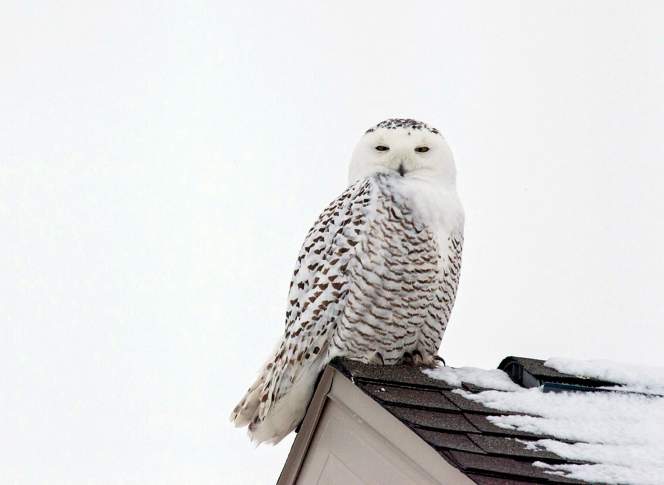An 'Irruption' Of Snowy Owls In Wisconsin Isn't Likely In Early 2017
A few of snowy owls generally make it to Wisconsin every winter, but some years many more of these white birds with large yellow eyes than normal visit – creating what's called an irruption
February 9, 2017

Snowy owl on roof

Snowy owls typically stay year-round near their nesting grounds above the Arctic Circle,but some are up for a winter adventure and spend the season in southern Canada and the northernmost areas of the United States.
A few of these beautiful animals with large yellow eyes generally make it to Wisconsin, but some years many more of the white birds than normal visit – creating what’s called an irruption, according to the Wisconsin Department of Natural Resources.
This was the case in the winter of 2014-15, when 239 snowy owls were reported, and again in 2015-16, when 248 were spotted. This winter, a more standard number have been counted as of January:51 in 27 counties, according to DNR reports.
Researchers are unsure why Wisconsinites have seen so many snowy owls in the state in recent years. Researchers believed at one point it was a lack of food in Canada, but that doesn’t seem to be the case anymore, said Karla Bloem, executive director of the International Owl Center based in Houston, Minnesota.
“The traditional thought was that when you have snowy owls coming south, it’s because there’s not enough food up in Canada, and everyone is starving, and they come south,” Bloem said. “(But) they realized that a lot of the birds that are coming south are fat and doing well.”
The latest research has shown it’s probably the opposite, she said. When food sources are stable, the owl population increases and the young owls go south to avoid competition. That’s when more snowy owls come to the United States.
Climate change is another factor that needs to be considered when looking at migration patterns of snowy owls, Bloem said.
“The tundra is a pretty fragile habitat, and of course the lemmings that live there (a major source of food for snowy owls) are very dependent on the vegetation there, which is dependent on the climate, and the snowy owls are dependent on the lemmings,” she said.
It all ties together, but no one is exactly sure what causes an irruption, Bloem said.
 Passport
Passport











Follow Us